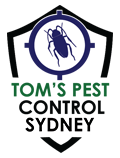Are you curious about Argentine ants? These tiny and invasive ants are originally from South America but have spread to many parts of the world. They form large colonies and have highly aggressive behaviour towards other ant species. As a result, they have taken over habitats and posed a threat to local ecosystems. Understanding the behaviour and impact of Argentine ants can provide valuable insights into managing their spread.
What Is Argentine Ants?
There are a few key characteristics to look out for if you want to identify Argentine ants. These ants are small in size, ranging from 1.6 to 2.8mm in length. They are dark brown. One distinguishing feature is their uniformly coloured body and lack of a defined waist.
They also have a particular odour, described as musty or like rotten coconut. If you spot ants fitting this description, they are likely Argentine ants.
Argentine ants are commonly found in urban and suburban areas. They are attracted to moist environments and easily accessible food sources. They prefer to build their nests in soil, beneath rocks, and near water sources. These ants are known for their highly organised and cooperative behaviour, often forming super colonies with multiple queens. Argentine ants can quickly spread and outcompete other ant species despite their small size. It can cause a nuisance for homeowners and gardeners.
The Argentine ant life cycle involves four stages: egg, larva, pupa, and adult. A queen ant lays eggs that eventually hatch into larvae. Larvae then grow and moult into pupae before emerging as adult ants. This process takes about two to three months, and the adult ants live for several years. Argentine ants can quickly establish colonies and reproduce, making them a pervasive species in different parts of the world.
Signs of an Argentine Ant Infestation
If you want to determine an ant infestation, there could be a few signs you should look out for.
- Argentine ants are pretty small, about 2-3 mm long and light to dark brown in colour. They also tend to leave lines or trails like other ant species. So if you see one of these little invaders running in your home, it’s a good indication that they’re building a nest nearby.
- The presence of honeydew, a sweet, sticky substance that these insects thrive on, can attract other pests like sooty mould.
- Check for ants on the exterior of your home too, where they can form colonies in crevices, walls, and garden beds.
If you notice any of these signs, you can contact a pest control professional for inspection.
Preventing Argentine Ants
Maintaining cleanliness and proper sanitation practices indoors and outdoors is essential. It includes:
- Regularly remove food sources, such as spilled or uneaten pet food, crumbs, and grease.
- Promptly clean up any spills or food residue.
- Sealing potential entry points, such as cracks and crevices in walls and floors.
- Regularly inspecting and maintaining outdoor landscaping, such as trimming shrubs and trees away from buildings.
If you suspect a pest invasion, it is best to consult a professional pest controller for proper identification and treatment.
Handover the Ant Removal Responsibility to Your Local Expert
If you are struggling with an Argentine ant infestation at your place, Tom’s Pest Control can help you eliminate them and prevent future invasions. We follow a practical and family-friendly approach that guarantees the complete eradication of ants from your property. Our trained technicians will thoroughly inspect your premises, locate the nests, and apply targeted treatments to eliminate the ants. We also offer preventive measures like sealing entry points and valuable tips to keep the ants away. So, you can trust us for Ant control for your home or business and contact us today.
Request a Quote
If you have trouble with an Argentine ant infestation and need help removing and preventing it from recurring, please contact us at (02) 8073 9252. Our experts are here to provide solutions tailored to your specific needs. So don’t let these invasive pests take over your home or business any longer. Let us help you reclaim your space.
Frequently Asked Questions
Can Argentine ants sting?
Argentine ants do not have a sting, but they can bite. However, their bite doesn’t cause any pain.
These insects are highly troublesome ant species due to their aggressive and territorial nature. They are not poisonous, but they can bite people. What’s unique about these species is that their nests cooperate, creating “super-colonies.”
What do Argentine ants eat?
Argentine ants are versatile eaters and consume various food items ranging from sugary drinks, cakes, pet food, and meat to dead insects. In addition, the queen ants can survive for several years. Even individual workers have a longer lifespan compared to other ant species. They can survive up to 10-12 months.
Why are Argentine ants bad?
Argentine ants are an invasive species that can cause significant damage to both the environment and human structures. They pose a significant threat due to their aggressive nature, high reproductive rates, and colonies that contain multiple queens. It enables them to spread rapidly and colonise large areas relatively quickly.
Moreover, these ants can displace native species, leading to biodiversity loss in the habitats they invade. It is often observed in urban ecosystems such as parks or gardens, where these ants compete with other insect populations for food or nesting sites. Additionally, they have been known to damage crop plants and disrupt beneficial pollinators such as bees by taking away resources like nectar sources and water access that are necessary for their survival.
Argentine ants may build large nests near buildings or inside walls. They can cause significant damage due to moisture infiltration from water stored within the nest.




